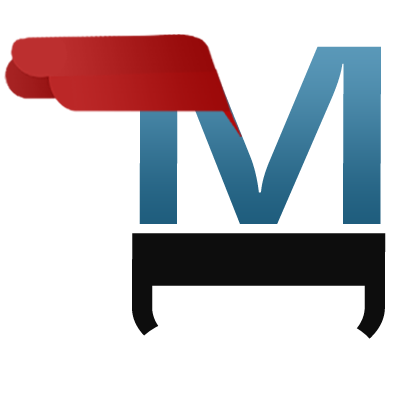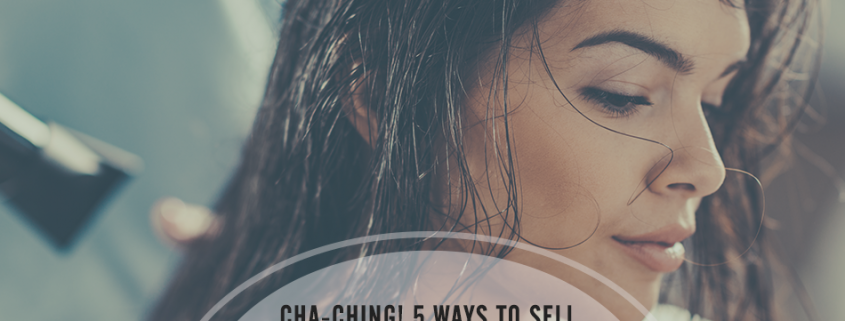Cha-Ching! 5 Places to Start to Sell More Salon Retail Products
Quickly impact profits when you sell more salon retail products to clients and local consumers. It sounds obvious but it’s not always easy. Assess these five areas to lay the foundation for improving salon retail sales.
Cha-Ching! 5 Starting Points to Sell More Salon Retail
Improving salon retail sales will do more than just boost the bottom line.
It’s true: salons with strong retail sales are better able to meet salon operating expenses, give raises, reinvest for expansion, engage in marketing and events to grow their client base, make repairs and even give back to their community. But the benefits of increasing retail sales in the salon or spa don’t end with profitability.
It’s about much more than money!
Ultimately, the recommendations a beauty professional makes to their clients and local consumers come from experience, knowledge and having the client’s best interest at heart. Once salon clients experience these type of benefits themselves, as a result of following prescriptive product recommendations, salon client loyalty is strengthened, word of mouth referrals increase and the client has a more positive impression of their stylist (or esthetician) and the salon or spa itself, as well.
5 Starting Points to Sell More Salon Retail Products
1. Buyer Personas (or Ideal Client Type) and Current Client Base
One size does not fit all. Understanding the demographics and common conditions, life styles, needs and wants of members of your current client base should influence the selection and mix of products that you choose to sell in your salon or spa.
Likewise, creating “buyer personas” can help you identify the type of retail beauty products that would be more likely to help you attract more of the ideal client types you want to attract to your salon or spa.
Buyerpersona.com defines a buyer persona as: “…examples of the real buyers who influence or make decisions about the products, services or solutions you market,” noting that identifying ‘types’ gives you more ability to develop effective strategies to reach and persuade those buyers to do business with you.
2. Inventory
Maintaining inventory is about more than keeping a few of each product on the shelf. Spas and salons with strong retail sales need to be able to:
Manage Inventory
Regularly taking a physical count of retail inventory to compare against sales and identify any possible theft is only one aspect of managing inventory. You should have goals not only for retail sales in general but for sales of each retail product you stock, in order to identify sales trends which may indicate:
- Products trending well with clients
- Products selling well due to staff endorsements
- Products that are not selling well or re-selling with clients
- Products that aren’t enthusiastically endorsed by staff or which staff aren’t confident in recommending
Predict Sales and Plan for Contingencies
Managing inventory efficiently and cost-effectively requires accurately predicting sales for a given period. Depending on product popularity, you may be able to take advantage of volume pricing discounts offered by manufacturers or distributors. Conversely, for slower-selling products, you may wish to limit inventory or adopt a “just in time” or even an on-demand only buying schedule.
Enhance Sales with Seasonal Products , Gifts and Personal Accessories
Salon retail sales of products that provide SPF protection or offer restorative benefits from sun or other environmental damage may slow during winter months when people spend more time outside. On the other hand, bolstering regular inventory with special retail items which make great gifts for others or represent profits from seasonal or personal impulse buys could be a big improvement to retail sales in the salon and spa; including items like:
- Holiday gift baskets or holiday-design products for Christmas, Valentine’s Day, Mother’s Day, Father’s Day, etc.
- Gift cards with holiday or occasion-oriented designs
- Greeting cards for holidays or occasions
- Hair and personal accessories such as brushes, barrettes, headbands, sports hair accessories, clips, etc.
- Personal use or accessory items with “bling” popular with female clients, such as travel coffee mugs, sports water bottles, lanyards and similar promotional products
3. Merchandising
Just as inventory is much more complicated than simply buying and stocking retail products, merchandising is more than setting inventory up on your shelves and placing a few shelf talkers alongside your products.
Merchandising isn’t creating a display; merchandising is all of the ways in which your products get visual and verbal representation in order to attract the attention of consumers. Your shelves aren’t the starting point, they are the end-point. To maximize sales of retail in the salon or spa:
- Start the conversation about your retail products long before the client arrives by merchandising products across all of your marketing channels, including your website, email news, social media, direct mailers, shelf and station talkers, etc.
- Write scripts for staff and do in-salon training and role play at staff meetings to help them feel more comfortable in making product recommendations
4. Staff Education
Spas and salons that find success selling professional beauty products to clients and local consumers often achieve this success through education. Knowledge is power, and beauty professionals who understand the benefits of professional beauty products inside and out and know how to recommend them prescriptively to clients are generally more valued by their clients for having done so.
Stylists who are well-versed in retail product knowledge are much more confident about making client recommendations during a service appointment:
- They are more comfortable and feel less like “sales people” as they have the ability to enthusiastically endorse specific products for their individual clients.
- Confidence and knowledge enables them to overcome objections, answer questions and make sure their client is well-educated about how to use the products at home.
- Experience with the product can help them identify where extending a special offer, free sample or another inducement to try a retail product to an individual client (or specific type of client) will most likely result in future sales.
5. Client Education
Last but certainly not least, your salon or spa should have a plan for systematically educating clients and prospects. Client education, like merchandising, shouldn’t start from behind the chair. Before the client ever arrives, they should have had an opportunity learn about some of the salon retail products you sell on your website, social networks, advertising or even the word of mouth referral that brought them to your salon.
Educating clients throughout the customer experience makes it that much more likely that they will follow your prescriptive advice at the point of sale!





